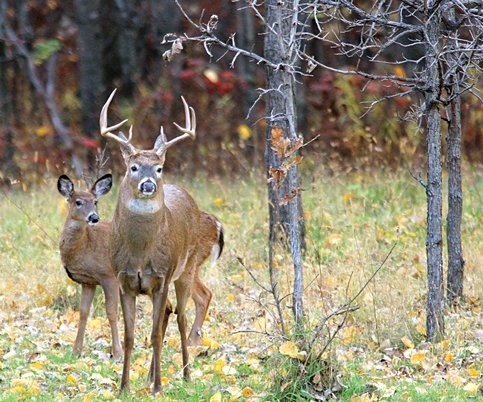Outdoors forecasts and predictions are often sketchy and can change with a heavy rain, cold spell, and other factors.
Many fungus, plant, and animal activities and developments are pretty well locked into a photoperiod, the length of daylight hours.
Christmas cactuses bloom based on shortening days as summer wanes.
Hens bring laying eggs when given the correct photoperiod and food.
Still, it’s encouraging to look ahead, knowing what to expect and anticipate.
Put all that together with the fact that wildlife populations are not evenly distributed can lead to disappointment in spite of sharp forecasts.
Doug Williams, owner of D W Sports Center in Portage, Wisconsin is putting weight on the dry 2024 autumn, low snowfall this winter, and a continuing need to bring soil moisture up to something closer to normal.
“With soil moisture in short supply, some things, including farm crops, are likely to have enough moisture early on and then struggle,” he said. “Gathering periods may not last long in the wild.”
Morel mushrooms are an excellent example. The last three years were poor growing seasons for this fungus that accumulates reserves during previous summers and falls. Even if those conditions were good, a dry spring can change all of that.
Other facts may be at play with morels, too. One is that the number of large white elm trees in woodlots. But there is always hope that this may be the year it all turns around and there is a motherlode of mushrooms under 25 percent of the trees. It may only take one such find to smile up the amateur mycologists.
Go early and keep looking, especially if spring turns warm early.
In 2012 morels were beginning to show in late March, but don’t expect that.
Consider other activities including spring turkey season, trout angling, bluebird box occupancy, chive cutting, bald eagle fledging, spring ephemeral blooming, acorn assessment, and fawn appearance.
“It’s was a tough fall, winter, and now spring for fly-fishers,” said Bret Schultz, trout sage in Black Earth, Wisconsin. “The water is clear, low and we can’t sneak up on the fish. They see us,”
It’s like trying to sneak up on a turkey before leaf-out. Movement can ruin many an outdoors venture, much more than one may realize.
“One way some anglers are equalizing the odds is to head out after 10 p.m.; really,” Schultz said. “If a cloudy day won’t do it, this might work for much of the early season to go late. But when a hatch is on and the fish are more occupied, fishing can be a bit easier even with these clean, low water conditions.”
But remember not all streams are the same. Maybe fish another county.
“River fishing for walleyes and perch is better, too, when the water is more normal, higher than it is now,” said Wally Banfi, clerk and fishing guide at Wilderness Fish and Game in Sauk City, Wisconsin.
“Night wading often produces larger fish.”
Turkey hunting should be good, according to Kate Mosley, at Kate’s Bait near Governor Dodge State Park in Iowa County. “It was a mild winter and turkeys had a good hatch last spring. There are bonus permits available for the last three hunting periods.”
“Turkey hunting should be great,” said Travis Anderson, Wisconsin Department of Natural Resources wildlife supervisor in Iowa and Lafayette counties.
“If a little bit of rain, or a lot, comes at the right time this spring, prairie grasses and forbs should explode again as they did in 2024,” Anderson said. “That should make great viewing and good cover for ground nesting birds.”
Ruffed grouse drumming counts in central and northern Wisconsin will predict populations this summer and fall. Those surveys are a month away.
Prescribed burning is hazardous with the dry fall and winter.
Several good soaking rains will help reduce the danger.
Tree and early grass pollen are likely to be more than some had hoped for because trees, shrubs, and grasses have enough moisture to open flower buds and wind and dry days are ideal for released pollen dispersal. Ideal, that is for the plant, not us.
Acorns, those on red oaks, are already on the trees from last spring’s flowers, so simply assess the situation by looking for the tiny acorns that will mature later this year and feed squirrels, turkeys and deer. The same is true for white pine cones and seeds. What’s going to mature this year are already on the tree.
Even with those negatives, and some positives, the more one looks and scouts the better the chances of finding a deer antler, a bedded fawn, an elm tree in the right stage of dying and decomposing, and a lady’s slipper orchid that had enough reserves and moisture to bloom in mid-May.
— Jerry Davis is a freelance writer who lives in Barneveld. He can be reached at sivadjam@mhtc.net or at 608-924-1112.




